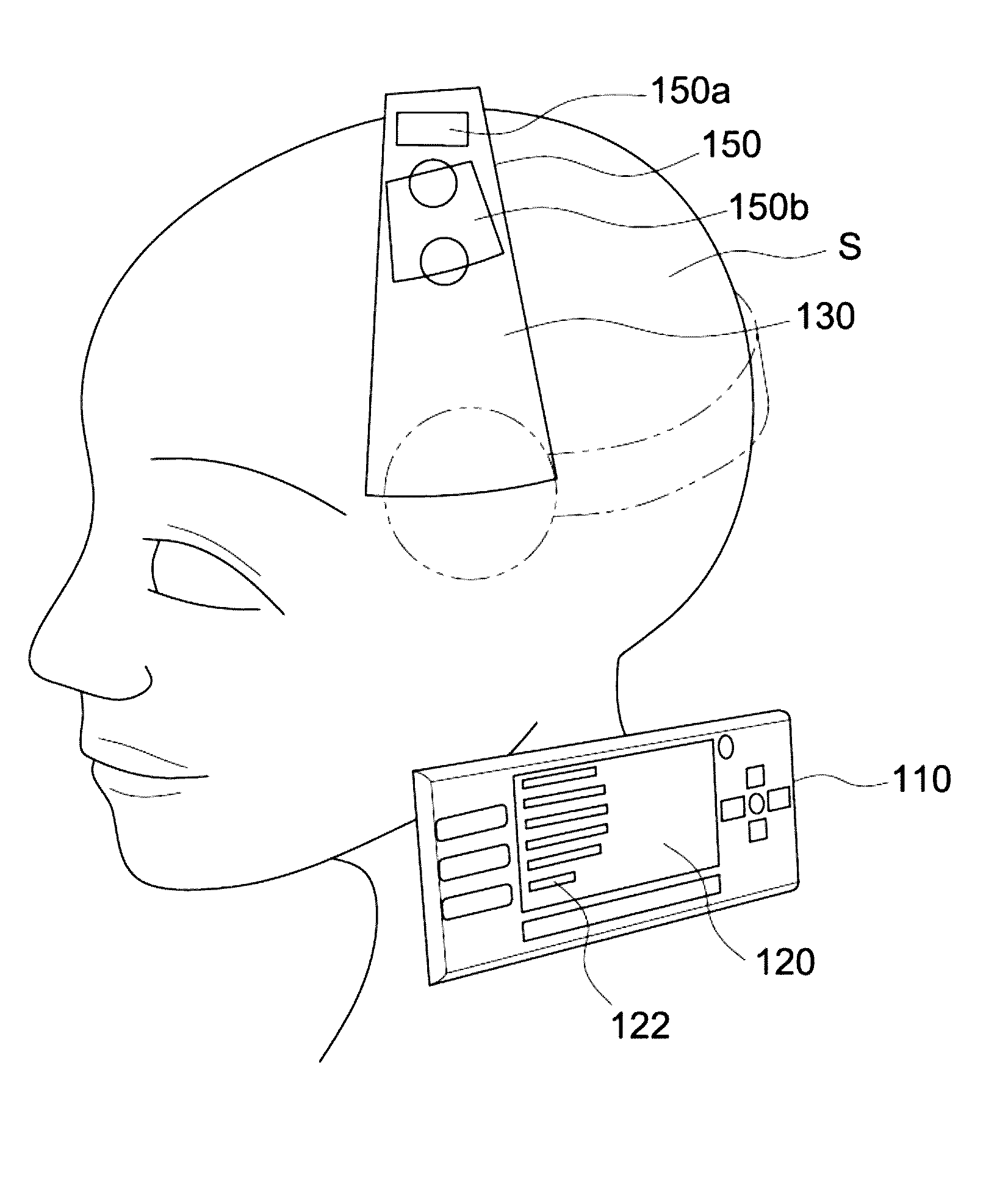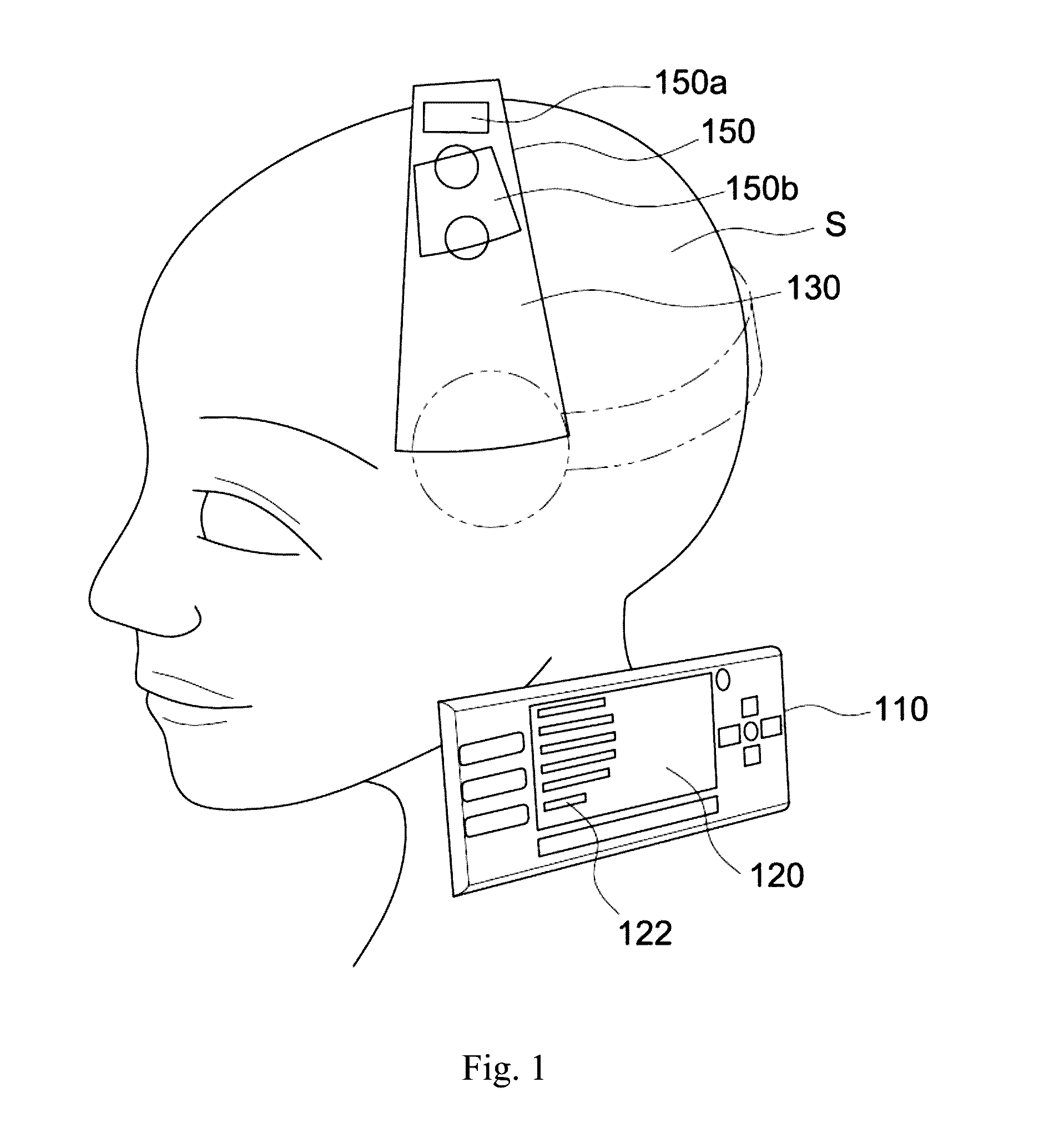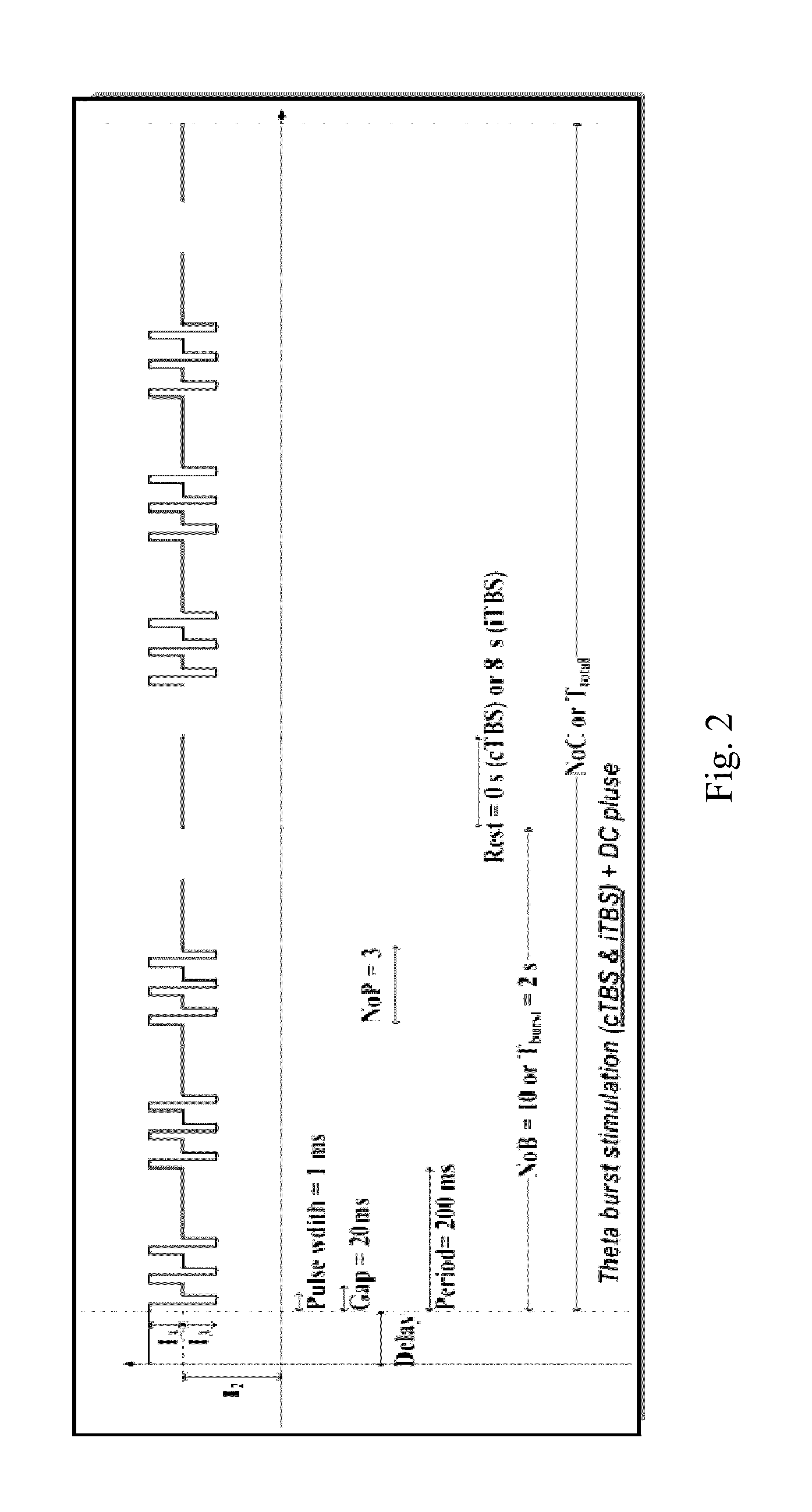Transcranial burst electrostimulation apparatus and its applications
- Summary
- Abstract
- Description
- Claims
- Application Information
AI Technical Summary
Benefits of technology
Problems solved by technology
Method used
Image
Examples
example 1
Animal Studies of Transcranial Burst Electrostimulation of the Invention
[0076]Male Wistar Rats were anesthetized by urethane and then fixed in 3-axe goniometer. Bregma of the rat was set as position 0 and the motor cortical areas in brain for upper and lower limbs of the rat were subjected to transcranial burst electrostimulation (Upper limb: AP: −1.5 mm, ML: 4.0 mm; Lower limb: AP: 1.0 mm, ML: 1.25 mm). Simultaneously, the electrical signal in brachioradialis muscle of upper limb was recorded to measure motor evoked potential (MEP) in motor cortical areas in brain receiving electrostimulation. The change of brain plasticity can be determined by MEP to evaluate whether there is a long-term potentiation (LTP)-like plasticity or long-term depression (LTD)-like plasticity. The fact that MEP maintains, increases or decreases for a period of time shows that the brain or neuronal plasticity can be changed.
[0077]The study used 15 rats subjected to the electrostimulation according to the me...
example 2
[0079]Twenty-four stroke patients were enrolled in a clinical study. The patients were divided into two groups, a control group and an experiment group. The control patients received functional electrical stimulation (FES) cycling training, while the experimental patients received the transcranial burst electrostimulation of the invention and FES-cycling training. MOTOmed Viva 2 (Medimotion Ltd.) was used in the FES-cycling training. One positive electrode of the transcranial burst electrostimulation system of the invention was placed on the motor cortical area (M1) of the head and the other negative electrode was placed on the back of the neck. The patients received tDCS treatment for 30 minutes each time. The output current was 0-2.0 mA and the corresponding current density was 0-0.08 mA / cm2.
[0080]After four weeks of treatment, the following evaluations were performed to evaluate the effect of the treatment: kinetic movement of FES-cycling training, modified Ashworth...
PUM
 Login to View More
Login to View More Abstract
Description
Claims
Application Information
 Login to View More
Login to View More - R&D
- Intellectual Property
- Life Sciences
- Materials
- Tech Scout
- Unparalleled Data Quality
- Higher Quality Content
- 60% Fewer Hallucinations
Browse by: Latest US Patents, China's latest patents, Technical Efficacy Thesaurus, Application Domain, Technology Topic, Popular Technical Reports.
© 2025 PatSnap. All rights reserved.Legal|Privacy policy|Modern Slavery Act Transparency Statement|Sitemap|About US| Contact US: help@patsnap.com



